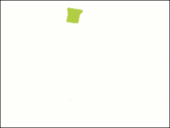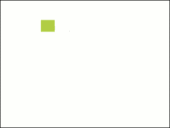| mo | |||
|---|---|---|---|
| |||
| transliteration | mo | ||
| hiragana origin | 毛 | ||
| katakana origin | 毛 | ||
| Man'yōgana | 毛 畝 蒙 木 問 聞 方 面 忘 母 文 茂 記 勿 物 望 門 喪 裳 藻 | ||
| spelling kana | もみじのモ Momiji no "mo" | ||
| unicode | U+3082, U+30E2 | ||
| braille | |||
| Note: These Man'yōgana originally represented syllables with one of two different vowel sounds, which merged in later pronunciation | |||
| kana gojūon | ||||||||||||||||||||||||||||||||||||||||||||||||||||||||||||
|---|---|---|---|---|---|---|---|---|---|---|---|---|---|---|---|---|---|---|---|---|---|---|---|---|---|---|---|---|---|---|---|---|---|---|---|---|---|---|---|---|---|---|---|---|---|---|---|---|---|---|---|---|---|---|---|---|---|---|---|---|
|
||||||||||||||||||||||||||||||||||||||||||||||||||||||||||||
| Kana modifiers and marks | ||||||||||||||||||||||||||||||||||||||||||||||||||||||||||||
| Multi-syllabic kana | ||||||||||||||||||||||||||||||||||||||||||||||||||||||||||||
も, in hiragana, or モ in katakana, is one of the Japanese kana, each of which represents one mora. Both are made in three strokes and both represent [mo].
モー is sometimes used as the onomatopoeia for cows.[1]
| Form | Rōmaji | Hiragana | Katakana |
|---|---|---|---|
| Normal m- (ま行 ma-gyō) |
mo | も | モ |
| mou moo mō |
もう, もぅ もお, もぉ もー |
モウ, モゥ モオ, モォ モー |
Stroke order
 Stroke order in writing も |
 Stroke order in writing モ |

Stroke order in writing も

Stroke order in writing モ
Other communicative representations
| Japanese radiotelephony alphabet | Wabun code |
| もみじのモ Momiji no "Mo" |
ⓘ |
|
|
 |
 | |
| Japanese Navy Signal Flag | Japanese semaphore | Japanese manual syllabary (fingerspelling) | Braille dots-23456 Japanese Braille |
- Full Braille representation
| も / モ in Japanese Braille | |||
|---|---|---|---|
| も / モ mo | もう / モー mō | Other kana based on Braille も | |
| みょ / ミョ myo | みょう / ミョー myō | ||
| Preview | も | モ | モ | ㋲ | ||||
|---|---|---|---|---|---|---|---|---|
| Unicode name | HIRAGANA LETTER MO | KATAKANA LETTER MO | HALFWIDTH KATAKANA LETTER MO | CIRCLED KATAKANA MO | ||||
| Encodings | decimal | hex | dec | hex | dec | hex | dec | hex |
| Unicode | 12418 | U+3082 | 12514 | U+30E2 | 65427 | U+FF93 | 13042 | U+32F2 |
| UTF-8 | 227 130 130 | E3 82 82 | 227 131 162 | E3 83 A2 | 239 190 147 | EF BE 93 | 227 139 178 | E3 8B B2 |
| Numeric character reference | も | も | モ | モ | モ | モ | ㋲ | ㋲ |
| Shift JIS[2] | 130 224 | 82 E0 | 131 130 | 83 82 | 211 | D3 | ||
| EUC-JP[3] | 164 226 | A4 E2 | 165 226 | A5 E2 | 142 211 | 8E D3 | ||
| GB 18030[4] | 164 226 | A4 E2 | 165 226 | A5 E2 | 132 49 154 55 | 84 31 9A 37 | ||
| EUC-KR[5] / UHC[6] | 170 226 | AA E2 | 171 226 | AB E2 | ||||
| Big5 (non-ETEN kana)[7] | 198 230 | C6 E6 | 199 122 | C7 7A | ||||
| Big5 (ETEN / HKSCS)[8] | 199 105 | C7 69 | 199 222 | C7 DE | ||||
References
- ↑ "モー". Longman Dictionary. Retrieved 2019-06-28.
- ↑ Unicode Consortium (2015-12-02) [1994-03-08]. "Shift-JIS to Unicode".
- ↑ Unicode Consortium; IBM. "EUC-JP-2007". International Components for Unicode.
- ↑ Standardization Administration of China (SAC) (2005-11-18). GB 18030-2005: Information Technology—Chinese coded character set.
- ↑ Unicode Consortium; IBM. "IBM-970". International Components for Unicode.
- ↑ Steele, Shawn (2000). "cp949 to Unicode table". Microsoft / Unicode Consortium.
- ↑ Unicode Consortium (2015-12-02) [1994-02-11]. "BIG5 to Unicode table (complete)".
- ↑ van Kesteren, Anne. "big5". Encoding Standard. WHATWG.
This article is issued from Wikipedia. The text is licensed under Creative Commons - Attribution - Sharealike. Additional terms may apply for the media files.

